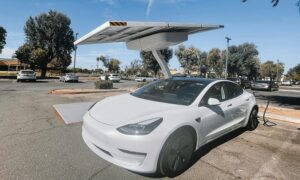Electric cars have increasingly become popular across the globe. Their environmental friendliness and cost savings are some of the factors that have contributed to their massive popularity, especially among those people who are keen on saving the planet.
If you already have your electric car, then it makes sense that you are looking for ways to maximize its range and get the most out of each kWh after seeking electric vehicle charging solutions. Let’s see how you can achieve this.
- Drive gently as much as possible.
Whether you’re driving an electric car or a car that runs on gasoline, acceleration requires energy. Additionally, your car needs more energy when you accelerate harder. For this reason, you want to reach cruising speed with the least amount of energy.
Drive as slowly as possible whenever traffic permits. To put it another way, avoid the urge to press the accelerator pedal too forcefully and instead accelerate gently. Some drivers may find it hard to prevent accelerating, particularly in electric vehicles (EVs), with a lot of force right off the line. However, keep an eye on the instrument cluster’s power meter. The less energy you require to reach a certain pace, the lower you may keep that bar or needle.
- Use regenerative braking [if available]
As they slow down, EVs can recover a sizable portion of the energy required to accelerate, unlike cars that only use internal combustion engines. By essentially converting the electric drive motors into generators, regenerative braking (or “regen”) slows the vehicle as its wheels spin while recharging the battery.
The most robust setting on some EVs’ adjustable regen allows for “one-pedal” driving, which means the friction brakes are rarely used when driving in cities or suburbs. Regen is also built into the brake pedal of the majority of EVs. After pushing the pedal past a specific point, this often initiates regen near the top of the pedal’s travel before switching to the friction brakes.
- Maintain a reasonable speed.
Electric vehicles are significantly more energy-efficient than gasoline-powered ones, which spend most of their energy producing noise and heat. However, driving faster significantly affects energy use regardless of the power source. Cars expend most of their energy moving their mass below about 30 mph.
But after this, cars must work harder to push the air they’re traveling through aside. Remember that the square of the speed increases the energy needed to overcome wind resistance significantly. But, this indicates that you expend significantly more energy when traveling at 80 mph than 65 mph.
- Turn off/down climate control and heating as needed
Some drivers overlook climate control when attempting to reduce energy use, even though it uses more energy than all the other accessories combined to heat and cool the cabin. Instead of trying to maintain a constant temperature across the cabin, some EVs now include a driver-only mode that sends warm or cool air solely to the driver.
Using your seat and steering-wheel heater in chilly weather rather than using the climate system to generate heat is the oldest EV technique. It’s common knowledge that you feel warmer if your hands and ass feel warmer.
You should utilize those heaters or direct the air vents toward yourself after setting the cabin temperature five degrees higher (in summer) or lower (in winter) than you would ordinarily. It’s possible that you won’t even notice the change.



































